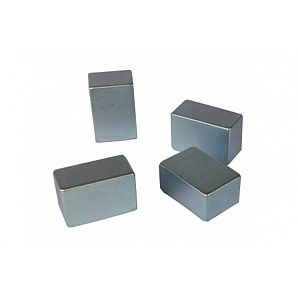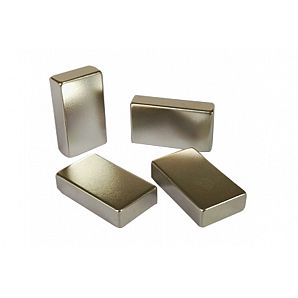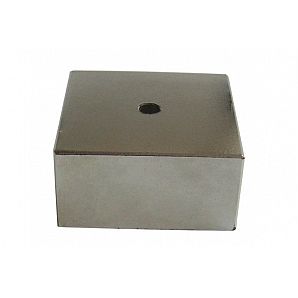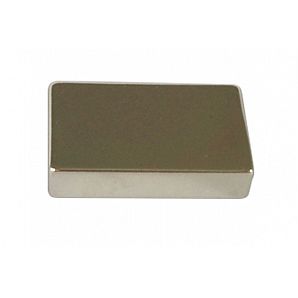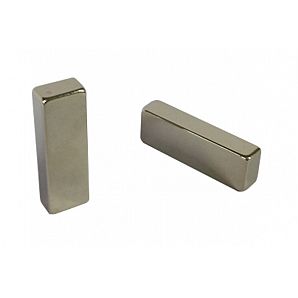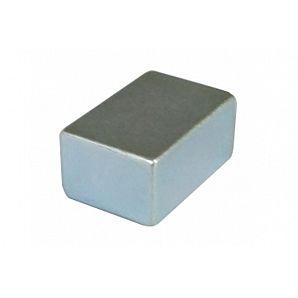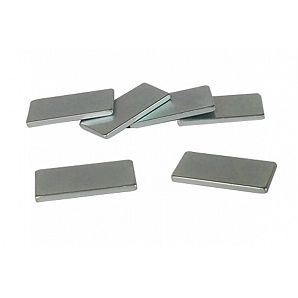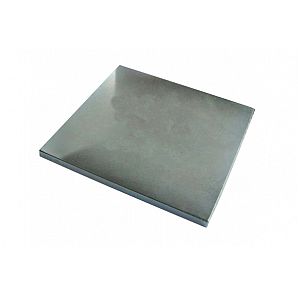1. Electroplating of NdFeB magnet
Neodymium iron boron plating mainly consists of nickel plating and zinc plating. Nickel plating can be divided into single nickel, double nickel, nickel copper nickel, etc. according to the different coating structure, it can be divided into dark nickel, semi bright nickel and smooth nickel according to the appearance and color. Generally, the nickel coating is nickel, copper, nickel, bright nickel and semi bright nickel.
The advantages of nickel plating are that the coating is more wear-resistant and environment resistant, and the worse is that the nickel layer is ferromagnetic material. The magnet has a certain influence on the magnetic properties, especially for thin and small products. The improvement method is to replace the nickel coating with part of the copper layer. The ferromagnetism of electroless nickel and electroplated Ni-P alloy is weak, but it is troublesome to remove the plating, which is not used as the mainstream coating.
Compared with electroplated nickel, the electroless nickel coating is more uniform, but it can not be directly plated on the NdFeB substrate at present. Moreover, the electroless nickel can not be used as the mainstream coating because of its short bath life, low driving force and high energy consumption. Nickel plated products, according to the requirements of the coating, can also be plated with gold, silver, tin, chromium, imitation gold, black nickel and other coatings.
Generally, chloride zinc plating is used for NdFeB zinc plating. From the perspective of domestic production, zinc plating is a large type of plating, especially for electric bicycle magnetic steel. The advantage of the coating is that it is cheap and convenient, and the zinc coating is not ferromagnetic. The disadvantage is that the wear resistance and weather resistance are not as good as the nickel coating. After galvanizing, passivation should be carried out generally. Due to the elimination of hexavalent chromium passivation, the commonly used passivation methods are trivalent chromium blue white passivation and trivalent chromium color passivation.
Of course, zinc passivation can be as rich as hardware; however, the current mainstream is trivalent chromium blue white passivation. However, up to now, it can not become a conventional plating of NdFeB.
2. Conversion membrane
The conversion coating of NdFeB mainly includes phosphating and passivation film. As the conversion film belongs to the workshop protection film, many products will have flash rust and other phenomena when used for a long time.
3. Coating
The coating referred to here refers to the coating by electrophoresis, spraying, brush coating and dip coating, excluding the gas phase coating. At present, the common coatings are epoxy paint coating, followed by everlube coating, Teflon coating and chromium free Dacromet coating.
Due to the variety of epoxy coatings, salt spray resistance test, hardness, color and so on are different. Everlube coating is generally golden yellow with metallic luster. It is an improved solid lubricant film produced in the United States. The comprehensive performance of the coating is very good and has been commercialized. Teflon coatings have also been commercialized. Advanced chromium free Dacromet is also a promising alternative to electroplating.
Vapor phase coating includes physical vapor deposition (PVD). Physical vapor deposition can be divided into evaporation, sputtering and ion plating. Magnets can form al, Zn, Cr coatings; chemical vapor deposition (CVD) can form nitride and carbide coatings of Ti and Cr; and chemical vapor deposition (CVD) polymer coatings, such as Perrin.
AISEN MAGNETS focused on development and manufacturing of Neodymium magnet, has more than 10 years manufacturing experience in producing various sizes, different shape and surface coating. Over 45 different grades of neodymium magnet (strong magnet) widely used in many industry.
Our Production line including vacuum melting, Jet mill, Isostatic press, vacuum sintering, machining and magnetization. Our annual design output is 1000tons, currently output is 800tons. Our experienced engineers work closely with customer to find out the best possible solutions to meet your requirements.

